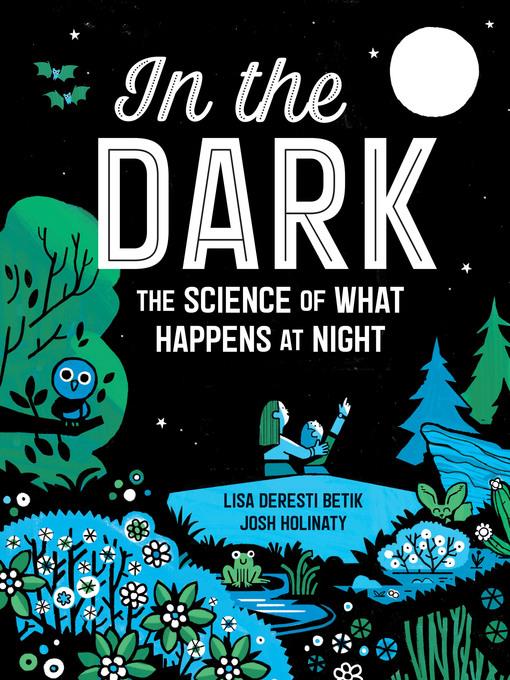
In the Dark
The Science of What Happens at Night
فرمت کتاب
ebook
تاریخ انتشار
2020
Lexile Score
1060
Reading Level
6-9
نویسنده
Josh Holinatyناشر
Kids Can Pressشابک
9781525305955
کتاب های مرتبط
- اطلاعات
- نقد و بررسی
- دیدگاه کاربران
نقد و بررسی

July 1, 2020
Gr 3-5-Author Betik and illustrator Holinaty provide an engaging guide to the science of the night. After an introductory page explaining what happens after dark, the text delves into four nighttime topics: how humans sleep, nocturnal creatures (a cat's night vision is fully explained as well as how an owl finds prey), nocturnal plants (moon gardens are mentioned, which are plants that attract nocturnal pollinators such as bats and moths), and the comets, meteors, and stars that are visible in the night sky. Betik's fact-filled writing is crisp and uses clear, inviting language. Holinaty's cartoon-style illustrations are digitally rendered, adding detail and whimsy to the fast-paced text. For the most part, the animals are depicted as cute and friendly. This book is a good starting point for research on nighttime science. A glossary and an index are appended. VERDICT A solid choice for libraries and classrooms studying the nocturnal world. Fun science.-Anne Chapman Callaghan, Racine P.L., WI
Copyright 2020 School Library Journal, LLC Used with permission.

June 1, 2020
A quick survey picks out "wild and wonderful things that happen while you sleep." Betik opens in the bedroom, with explanations of circadian rhythms, REM and non-REM sleep cycles, and current theories about why we dream. She then ventures outside for looks at the eyes of cats, owls, and tarsiers; shows how certain creatures use tongues, whiskers, and other organs to compensate for the lack of light; and describes how plant metabolism changes when the sun goes down. Then it's time to look up: at auroras and lunar phases; at planets and twinkling stars; at constellations, comets, and meteor showers. On every page, limited applications of color serve to illuminate the accurately rendered plants, animals, and astronomical phenomena in Holinaty's squared-off panels and insets. His creatures are drawn in expressive poses, and human figures, though stylized, show a diverse range of skin hues. Readers may need to stretch to see the way plants allocate stored energy to get them through each night as "plant math," but overall the author's facts are straight as well as flashy enough to stick. Young STEM-winders may be more comfortable with this than Lena Sj�berg's equally broad but more atmospheric Bright in the Night (2019). Specialized vocabulary is identified in boldface, spelled phonetically, and contextualized within the narrative, and a glossary in the backmatter pulls it all together for easy reference and review. (This book was reviewed digitally with 11-by-17-inch double-page spreads viewed at 56.5% of actual size.) Illuminating insights for nocturnal naturalists. (sources, index) (Nonfiction. 8-10)
COPYRIGHT(2020) Kirkus Reviews, ALL RIGHTS RESERVED.

























دیدگاه کاربران